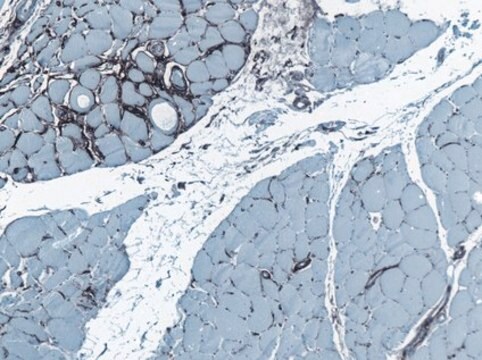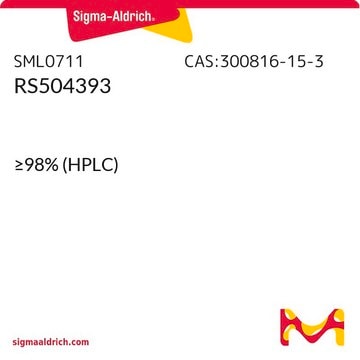227016
CCR2 Antagonist
≥97% (racemic mixture, HPLC), solid, CCR2 antagonist, Calbiochem®
Synonim(y):
CCR2 Antagonist, 2-((Isopropylaminocarbonyl)amino)-N-(2-((cis-2-((4-(methylthio)benzoyl)amino)cyclohexyl)amino)-2-oxoethyl)-5-(trifluoromethyl)-benzamide, CC Chemokine Receptor 2 Antagonist
Wybierz wielkość
753,00 zł
Przewidywany termin wysyłki05 maja 2025Szczegóły
Wybierz wielkość
About This Item
753,00 zł
Przewidywany termin wysyłki05 maja 2025Szczegóły
Polecane produkty
Nazwa produktu
CCR2 Antagonist, The CCR2 Antagonist, also referenced under CAS 445479-97-0, controls the biological activity of CCR2.
Poziom jakości
Próba
≥97% (racemic mixture, HPLC)
Formularz
solid
producent / nazwa handlowa
Calbiochem®
warunki przechowywania
OK to freeze
desiccated (hygroscopic)
protect from light
kolor
white
rozpuszczalność
ethanol: 6 mg/mL
DMSO: 60 mg/mL
Warunki transportu
ambient
temp. przechowywania
2-8°C
Opis ogólny
Opakowanie
Ostrzeżenie
Uwaga dotycząca przygotowania
Rekonstytucja
Inne uwagi
Informacje prawne
Kod klasy składowania
11 - Combustible Solids
Klasa zagrożenia wodnego (WGK)
WGK 3
Temperatura zapłonu (°F)
Not applicable
Temperatura zapłonu (°C)
Not applicable
Certyfikaty analizy (CoA)
Poszukaj Certyfikaty analizy (CoA), wpisując numer partii/serii produktów. Numery serii i partii można znaleźć na etykiecie produktu po słowach „seria” lub „partia”.
Masz już ten produkt?
Dokumenty związane z niedawno zakupionymi produktami zostały zamieszczone w Bibliotece dokumentów.
Active Filters
Nasz zespół naukowców ma doświadczenie we wszystkich obszarach badań, w tym w naukach przyrodniczych, materiałoznawstwie, syntezie chemicznej, chromatografii, analityce i wielu innych dziedzinach.
Skontaktuj się z zespołem ds. pomocy technicznej








